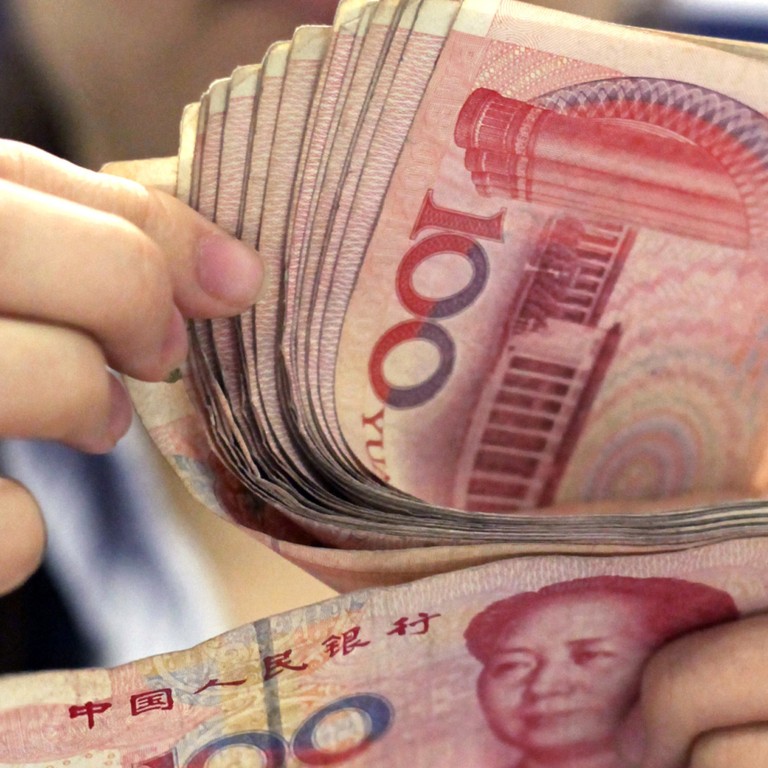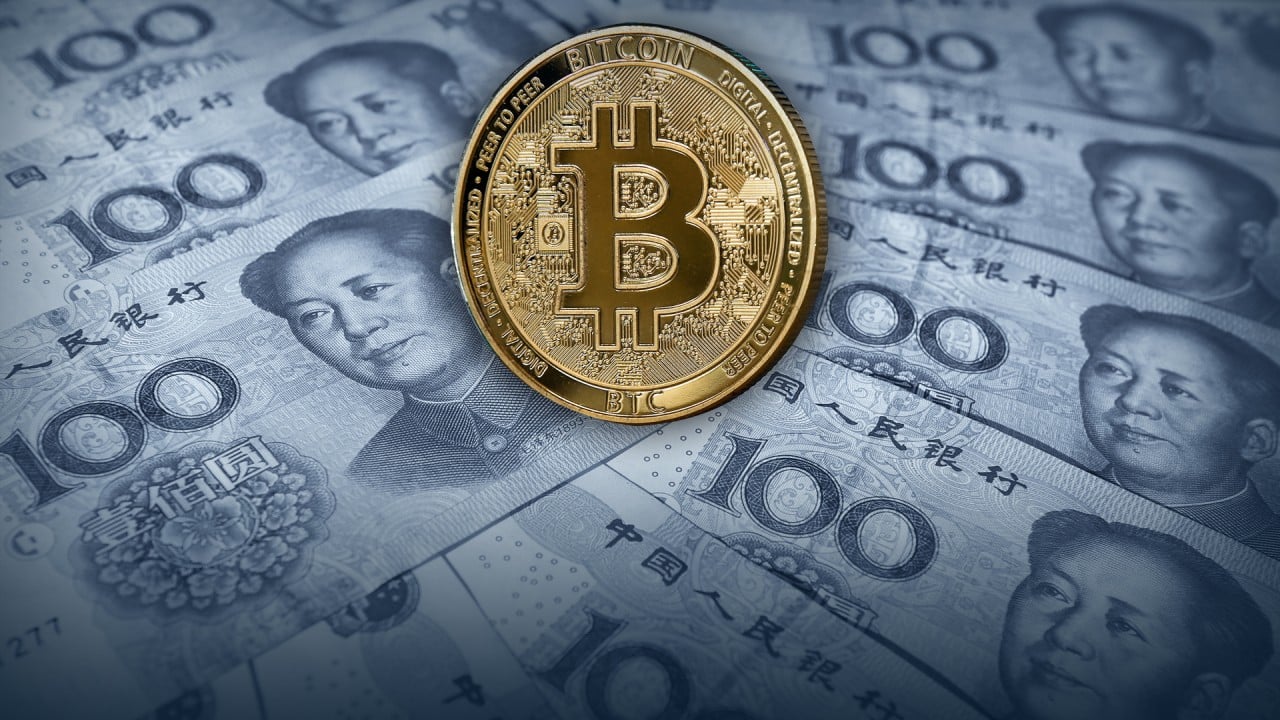
Why China’s economic slowdown could spell bad news for Asian currencies
- China is a net importer of goods from many Southeast Asian nations, so a slowdown in demand would affect their currencies
- In 2020, Asean jumped to be the number one trading bloc with China, which runs a trade deficit with many countries in the region
China’s strong economic recovery is expected to fade in the months ahead, putting downward pressure on the yuan exchange rate and consequently creating headwinds for other Asian currencies, analysts said.
China is a net importer of goods from many Southeast Asian countries such as Malaysia, Thailand, Vietnam, Singapore and Indonesia, so a slowdown in demand would have knock-on effects for their currencies.
Generally the Chinese yuan acts as an important anchor in the regional foreign exchange market, as economies in East Asia such as Taiwan and South Korea have tight China trade links via complex supply chains, analysts said.

01:19
China’s economy rose 7.9 per cent year on year in the second quarter of 2021
Weaker currencies would make exports from Southeast Asian nations more competitive in international markets. But it would also increase the cost of key raw materials and components for them, already high because of rising global demand and supply chain disruptions.
Historically, Asian currencies tend to move in tandem with the yuan (RMB) when there is weak risk appetite and peaking growth momentum, said Paul Mackel, head of emerging markets currency research at HSBC.
“This is a development to watch given how it could turn into a headwind for those currencies that are typically more sensitive to RMB movements,” Mackel said. “Low confidence in the prospects of [some Asean] economies could be pushing local investors to invest in overseas assets.”
As China slows, so too will demand for regional exports. In this regard, Asean stands out as relatively exposed
The official manufacturing purchasing managers’ index (PMI) – a gauge of industry sentiment – slumped to 50.4 in July, its lowest level in 17 months, indicating a moderation in business activity. The non-manufacturing PMI dropped to a five-month low of 53.3. The 50-mark separates growth from contraction on a monthly basis.
“A slowing Chinese economy would increase business uncertainty and a deter ioration in confidence in the region,” sa id Be rnard Aw, Asia-Pacific economist a t Coface. “The most affected Asian economies would be those deeply integrated in the Asian production chains.”
China’s economic growth to cool at end of year, weighed down by slowing export demand
Aw said these effects would have partially been offset by a fall in commodity prices in the past, but the unique impact of the pandemic and associated supply chain problems means China’s slowdown could contribute to rising global commodity prices as supply fails to meet demand globally.
China runs a trade deficit with many countries in the region, underscoring its importance as a source of final demand. These Asian nations relied on exports to support growth throughout the pandemic while domestic activity remained sluggish, said Sue Trinh, senior macro strategist at Manulife Investment Management.
“That is a major vulnerability since it leaves an economy hostage to foreign demand,” Trinh said. “As China slows, so too will demand for regional exports. In this regard, Asean stands out as relatively exposed, which has increased its dependence on Chinese demand to record highs over the past few years.”

06:54
Is cryptocurrency too risky for China?
Asean jumped to be the number one trading bloc with China for the first time in 2020, with trade volumes hitting 4.74 trillion yuan (US$733.6 billion), 7 per cent growth year on year, and making China Southeast Asia’s largest trading partner for 12 years in a row.
In addition, China imports cars, capital equipment and high-end machinery from the United States and Europe Union (EU), so slowing demand would affect these industries, said Aidan Yao, senior emerging Asia economist at AXA Investment Managers.
But overall, the US and EU run trade deficits with China, meaning they are a source of net export demand for China, not the other way round.
“The interaction between China and the rest of the region across many industries, via complex supply chains, is tighter than China’s trade links with the US and EU,” Yao said. “[China’s] growth slowdown, if abrupt, could be negative for RMB assets, depressing the yuan vis-à-vis the dollar and euro.”
China’s surging yuan allows Beijing greater financial flexibility, creating capital markets ‘too big to ignore’
Analysts said it was clear that the US Federal Reserve and the People’s Bank of China (PBOC) are on diverging monetary policy paths.
The Federal Reserve is likely to begin scaling back, or “tapering”, its programme of buying bonds from the market to inject additional liquidity – so-called quantitative easing – later this year and thereby supporting the US dollar. On the other hand, the PBOC aims to support growth through lower reserve requirement ratios, pressuring the yuan’s value.
Few Asian currencies will be unscathed by the double whammy of more hawkish Federal Reserve policy and a resurgence of the coronavirus. But South Korea’s won and Taiwan’s dollar are likely to be affected the most because of their tight trade links in China and East Asia, said Gao Qi, currency strategist at Scotiabank.
“Given China’s extensive trade links with the rest of Asia, an overly sharp Chinese slowdown may weigh on Asian growth and currencies,” said Chiang Wei-liang, macro currency and credit strategist at DBS Bank. “We expect the Korean won to see the largest impact given Korea’s role as an upstream trading partner.”
Chiang said a Chinese slowdown also poses headwinds for European exporters and to a lesser extend for the US. That said, the outlook for developed economies is improving due to widespread vaccinations, and the recovery momentum could act as a buffer against against any incremental drag from China.
Recent regional data has already indicated the impact of China’s expected economic slowdown.
South Korean manufacturing confidence fell to 92 in August from 99 in July, while confidence among non-manufacturers dropped to 78 from 82. Korea’s trade surplus also narrowed to US$1.76 billion in July from US$4.45 billion a month ago.
Indonesia’s current account deficit has deteriorated considerably due to the pandemic, and its currency has been one of the worst hit in Asia, falling 18 per cent against the US dollar in the last six months after worries emerged over US policy tapering plans.
As such, the Indonesian rupiah could slide 3.1 per cent to 14,000 per dollar by year end, said Heng Koon How, head of markets strategy at UOB.

Malaysia’s growth outlook is also set to dim over the rest of the year after the nation reported a record number of daily Covid-19 cases in July, resulting in new restrictions on businesses and consumers.
The Malaysian ringgit fell 2 per cent last month, the largest drop in four months. It is expected to drop another 2.4 per cent to 4.32 per dollar by year end, although depreciation pressure may be most acute in the third quarter, Heng said.
HSBC’s Mackel predicted the Singapore dollar would drop a modest 0.7 per cent to 1.36 per dollar by the end of the year after last month’s underperformance due to its sensitivity to global growth concerns.
The city state’s small economy is heavily reliant on trade with Asean countries, more than with mainland China. Anxiety around the latest virus wave should ease as it may soon open its economy and borders, given its vaccination rate is expected to increase to 80 per cent of the population by September.
“One potential exception could be India’s rupee,” Mackel said. “The ability to withstand portfolio outflows of up to US$3 billion per month given steady inflows from external borrowing and non-resident deposits and improved foreign reserve adequacy metrics could help defend the rupee against external headwinds.”

